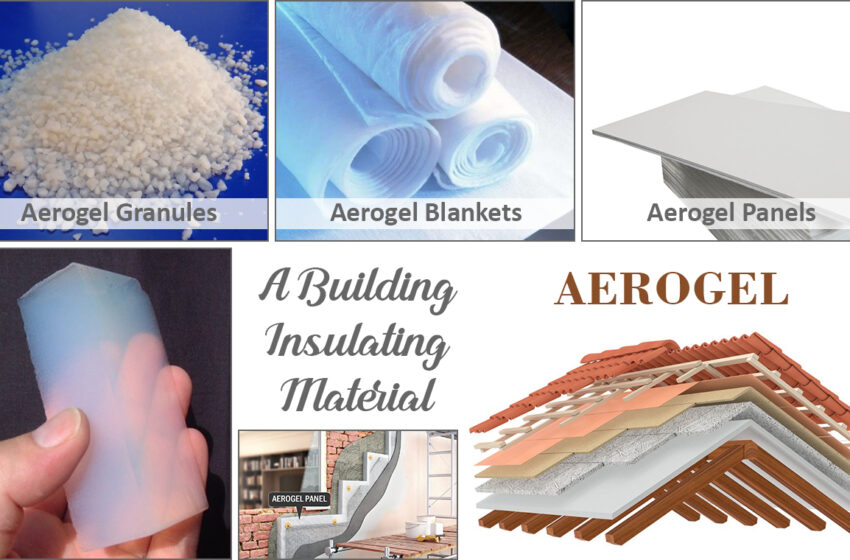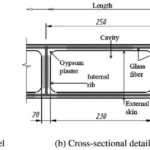
As the construction industry embraces innovation, aerogels have emerged as a cutting-edge material with transformative potential. Known for their extreme lightness and unparalleled insulation properties, aerogels are pushing the limits of material science and opening new possibilities for sustainable and high-performance construction.
What Are Aerogels?
Aerogels are ultralight materials derived from a gel, where the liquid component is replaced with a gas, leaving behind a porous solid network. Often referred to as “frozen smoke” or “solid air,” aerogels are renowned for their extremely low density and exceptional insulating capabilities.
Properties of Aerogels
Aerogels possess a unique set of properties that make them stand out in construction and beyond:
- Ultra-Lightweight:
- Aerogels are composed of up to 99.8% air, making them some of the lightest materials in existence.
- Exceptional Thermal Insulation:
- Aerogels are among the best thermal insulators, significantly reducing heat transfer.
- High Porosity:
- The material’s porous structure allows for effective insulation without adding bulk.
- Strength-to-Weight Ratio:
- Despite their lightness, aerogels exhibit impressive mechanical strength.
- Low Thermal Conductivity:
- Their ability to minimize heat transfer makes them ideal for energy-efficient applications.
- Hydrophobicity:
- Many aerogels are water-resistant, enhancing durability in humid conditions.
How Are Aerogels Made?
The production of aerogels involves several stages:
- Sol-Gel Process:
- A gel is formed by mixing a precursor (such as silica, carbon, or metal oxides) with a solvent.
- Solvent Removal:
- The liquid component is extracted through a drying process, often using supercritical drying to prevent the structure from collapsing.
- Final Processing:
- The aerogel is shaped, treated for hydrophobicity, or combined with other materials to meet specific requirements.
Applications of Aerogels in Construction
Aerogels are becoming a sought-after material in construction due to their versatility and performance:
- Building Insulation:
- Aerogel-based panels and blankets are used for thermal insulation in walls, roofs, and floors, enhancing energy efficiency.
- Transparent Insulation:
- Silica aerogels allow natural light to pass through while providing excellent insulation, ideal for windows and skylights.
- Fireproofing:
- Their resistance to high temperatures makes aerogels suitable for fireproof barriers and coatings.
- Acoustic Insulation:
- Aerogels effectively dampen sound, making them valuable for noise reduction in urban environments.
- Structural Components:
- Aerogel composites are used in lightweight, high-strength materials for load-bearing applications.
Advantages of Aerogels in Construction
- Energy Efficiency:
- Reduces heating and cooling costs by minimizing thermal losses.
- Lightweight Design:
- Reduces structural load, enabling innovative architectural designs.
- Space-Saving:
- Thin aerogel panels provide superior insulation without occupying excessive space.
- Sustainability:
- By improving energy efficiency, aerogels contribute to greener buildings and reduced carbon footprints.
- Versatility:
- Can be tailored for various applications, from insulation to fireproofing.
Challenges and Limitations
While aerogels offer numerous benefits, there are some challenges to their adoption:
- High Cost:
- The production process is complex and expensive, limiting widespread use.
- Brittleness:
- Traditional aerogels can be fragile, although newer composites are addressing this issue.
- Scalability:
- Large-scale manufacturing for construction applications remains a technical challenge.
- Handling and Installation:
- Requires careful handling to avoid damage during installation.
Future Trends in Aerogels
Research and development are driving advancements in aerogel technology, making it more accessible and practical:
- Cost Reduction:
- Innovations in manufacturing processes are expected to lower production costs.
- Enhanced Durability:
- Development of aerogel composites with improved mechanical properties for long-term use.
- Wider Applications:
- Expansion into areas like seismic-resistant materials, lightweight structural components, and energy storage systems.
- Sustainable Production:
- Exploration of bio-based aerogels and greener production methods.
Conclusion
Aerogels represent a significant leap forward in construction materials, offering unparalleled insulation, lightweight design, and versatility. While challenges like cost and scalability remain, ongoing research and innovation are paving the way for wider adoption. As the construction industry moves toward sustainability and energy efficiency, aerogels are poised to play a crucial role in shaping the buildings of the future.




